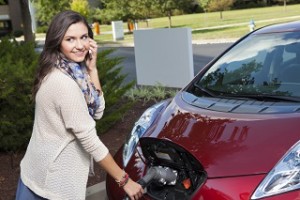What’s Up with the Electric Vehicle Adoption Curve?

As Jon covered in this newsletter, the cumulative year-to-date totals for auto sales in the United States suggest that plug-in electric vehicles are 0.7% of the total in the U.S. year-to-date. Now course, this does not include other forms of alternative fuel: compressed and liquefied natural gas, propane, hydrogen, etc. Nonetheless, it’s an alarmingly small number.
Is this migration happening at all? Yes, I believe it is. Changes in major industrial paradigms, although they happen rarely, tend to happen fairly quickly when they do in fact occur. I’m predicting a hockey stick style growth curve for electric transportation over the next 10 years. Linked above are some of my points that support that thesis.
The discussion continues here, in my post “The Viability of Electric Transportation.”

Although it is an older posting it seemed more appropriate to add my comments to your prediction reference than here.
The EV adoption curve won’t start to turn upwards at any sort of steep angle until we get much closer to the 200+ mile range car that costs less than $25k. Then, look out ICE. Until then, it will remain mostly the more committed and able souls that drive pure electric. Enjoyed reading those comments about the price of renewables by Steven Chu you linked in a previous post. A battery breakthrough would be nice, if we could constrain/manage the growth that unlimited cheap, clean energy would encourage.
I still don’t see it Craig.
Every player in the industry is still selling at loss leader pricing, and that pricing still includes unthinkable federal and state incentives.. and the market still isn’t growing.
Tesla is the only company likely to survive the winnowing in the EV field (this is only the first year of winnowing), and Tesla is still losing hundreds of millions per year, even with the incentives.
The market just isn’t there, and the vehicles cannot compete (sans incentives) unless gasoline in pushing ~$6-$8/gallon… which as we all know is fine, because they’re worse for the environment in the present grid regime anyway.
😉
Regarding electric vehicle adoption perhaps people have entirely unrealistic expectations of the market share for An EV or any new technology when compared to an entrenched petrol fueled vehicle and the industry behind it.
So lets first find a bench mark up for a realistic comparison rather than imagine some number derived from posterior regions. Here is some market research. http://www.ondigitalmarketing.com/learn/odm/foundations/5-customer-segments-technology-adoption/ You can see that early adoptors make up 2.5% of the ultimate market share. But the graph assumes an eventual 100% market share. I am not quite ready to concede that we have reached the end of the “early adoptor” stage. But if we were to assume that it would be reached at about 1% of market penetration then by extrapolation we might then assume that total EV market penetration with current technology could ultimately peak out at about (100/2.5) 40% which seems entirely reasonable.
Instead we seem to carry with us an entirely unrealistic assumption that it has to be all of one thing or all of another. There was a time when we assumed that every new power plant had to be coal powered. Now there seems to be an assumption that every new power plant must use renewable energy.
At some point, if we intend to be relevant, we have to separate our goals and hopes from our realistic expectations. When we do that we find that the EV is not a “Failure” because it fails to take over the market but just maybe the “Failure” is in us for failing to understand the market potential at the current technology and with the current competition.
I do have some trouble getting past the argument that the EV is “worse” for the environment than a petrol burner. I have seen the argument many times, have written 2 articles about the issue, I have crunched the numbers but I continue to look at challenges.
The essential argument that seems to make this unreasonable is the electrical cost for refining oil. When it is clear that refining oil requires 2/3 the electricity that would take the EV the same distance as a petrol burner using the refined gasoline then it seems almost a matter of calculation to find that the petrol vehicle is causing 2/3 the same electrical energy pollution that the EV is causing plus the pollution from burning the gasoline to power the vehicle.
This consideration is valid no matter what fuel is used to make electricity, but when you factor in the variable fuel mix for electricity and the main power feed from coal fired power plants to fuel refineries it also tends to skew results in favor of the EV.
Please see my reply to your other comment.
Breath on the Wind,
Refining oil results in net positive electricity production. Yes some electricity is consumed, but petroleum coke and petroleum liquids account for enough of the nation’s electricity production to offset much of the electrical consumption at refineries throughout the nation – before even considering the methane that is is produced at refineries.
In 2014 (the EIA hasn’t updated their information for 2015 yet), refineries across America consumed ~42.2 TWh of electricity, with which they produced 4.35 billion bbl of petroleum product. That would work out to 0.23 gallons/kWh, or enough to drive a typical EV about 5 miles. Of course, of that total, only 3.03 billion bbl were liquid fuels, the rest being various industrial chemicals and plastic feedstocks.. But among those additional products, sufficient petroleum coke and non-fuel petroleum liquids were produced that were consumed in the generation of 30.2 TWh of electricity. So now we’re looking at ~3.03 billion bbl of liquid fuels, and the net consumption of ~12 TWh of electricity. That’s a net draw of ~0.094 kWh/gallon of fuel, or enough to drive an EV ~2 miles.